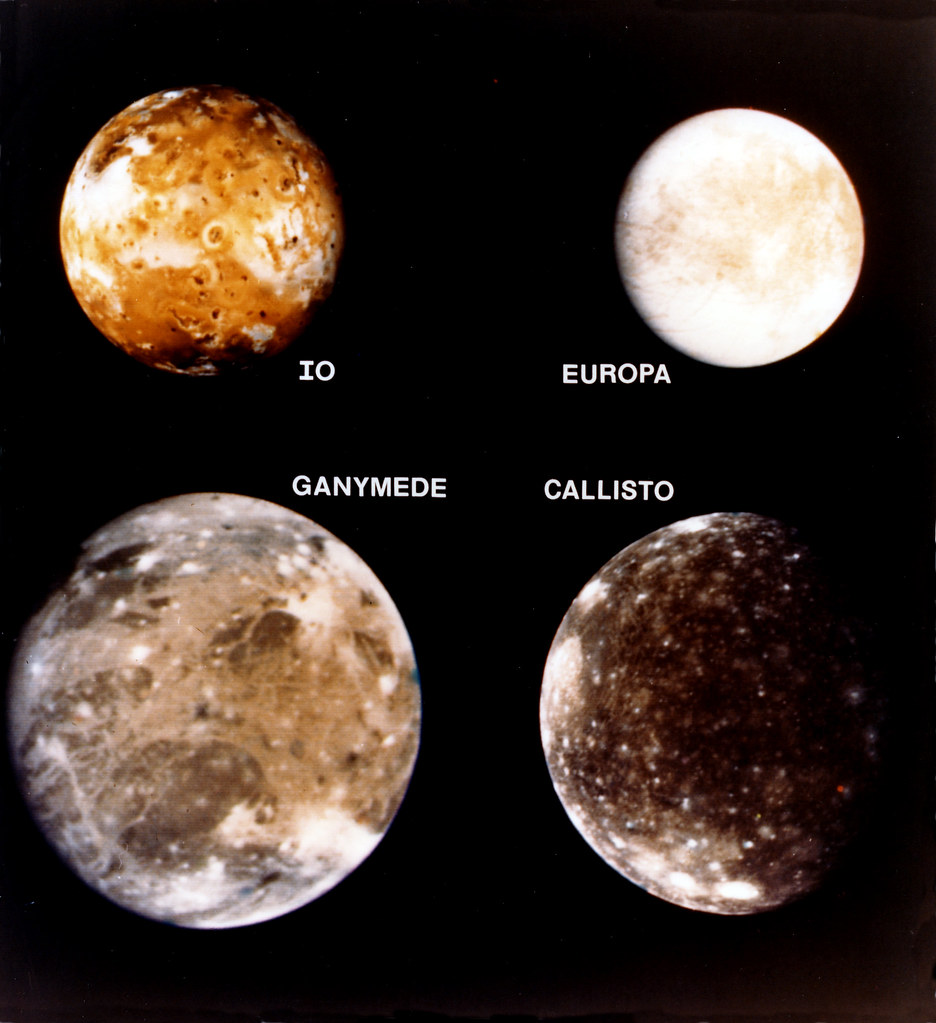Context:
Recently, an international team of scientists, including from India, has discovered strong evidence indicating the presence of ozone on Jupiter’s moon Callisto.
Key highlights:
- The study, published in the March 2024 issue of the journal Icarus, focuses on the chemical evolution of SO2 astrochemical ice. This ice primarily consists of sulphur dioxide (SO2) and is exposed to ultraviolet (UV) irradiation.
- By analyzing the UV absorption spectra of the irradiated ice samples, the team identified a distinct signature indicating the formation of ozone (O3).
- The presence of ozone suggests the existence of stable atmospheric conditions on Callisto, which raises intriguing questions about the moon’s habitability.
- This discovery sheds light on the complex chemical processes occurring on icy celestial bodies within our Solar System.

Experimental Setup and Observations:
- Scientists led by R. Ramachandran from the Physical Research Laboratory, Ahmedabad.
- The scientists aimed to explore the chemical evolution of sulphur dioxide (SO2) ice under irradiation.
- Specifically, they wanted to understand how ozone forms in conditions similar to those found on Callisto’s surface when it is exposed to sunlight.
- Prior to this study, researchers had already demonstrated the process of ozone formation in controlled laboratory experiments.
- These experiments involved irradiating SO2 ice with ultraviolet (UV) light to simulate the solar radiation that reaches celestial bodies like Callisto.
- To achieve this, they used vacuum ultraviolet (VUV) photons, which closely mimic the solar radiation reaching the moon.
- Experiments conducted at NSRRC in Taiwan, which provided access to high-energy radiation sources required to recreate the radiation coming from the Sun.
- To recreate Callisto’s surface conditions, researchers placed a substrate of lithium fluoride in a chamber with very low pressure. They deposited sulphur dioxide ice samples on this substrate to mimic the moon’s surface.
- Temperature control was carefully managed, starting at a chilly 9 K and gradually increasing to 120 K to mimic various environmental scenarios.
- The ice samples were irradiated with vacuum-ultraviolet photons, resembling solar radiation, and their absorption spectrum was observed using a photomultiplier tube detector to analyze their properties accurately.
- The ultraviolet absorption spectrum revealed the formation of ozone (O3) after the sulphur dioxide ice samples were irradiated.
- The researchers also compared their experimental data with data collected by the Hubble Space Telescope, which had also suggested the presence of sulphur dioxide and ozone on the surface of Callisto in 1997.
- In addition to ozone, the researchers observed an unidentified band in the absorption spectrum.
- This band is similar to what was observed on Ganymede in 1996.
- It hints at a common molecular source in the surface compositions or chemical processes of these icy moons.
Understanding these processes could provide insights into geological and atmospheric phenomena.
About Callisto
- The credit for discovering Callisto goes to Galileo Galilei along with Jupiter’s three other largest moons (Ganymede, Europa, and Io) in 1610.
- Callisto, Jupiter’s second-largest moon and the third-largest in our solar system, followed by Ganymede (Jupiter) and Titan (Saturn), boasts a diameter nearly as big as Mercury. It orbits Jupiter at a distance beyond the planet’s main radiation belt.
- Heavily cratered icy surface, indicating an ancient and potentially inactive past compared to other Jovian moons. Scientists suspect the bright areas are water ice, while darker regions might be eroded ice.
- A unique mix of roughly equal parts rock and ice, with traces of sulfur dioxide and organic compounds.
- An extremely thin atmosphere likely composed of carbon dioxide and possibly molecular oxygen.
Looking Forward: Implications for Astrobiology
- The discovery of ozone on Callisto adds another layer of intrigue to this distant moon.
- While Callisto’s extremely cold surface temperatures (-180°C) and lack of a global internal heat source make it unlikely to harbor life on the surface, the possibility of subsurface oceans raises interesting questions.
- If liquid water exists beneath Callisto’s icy crust, the presence of ozone and potentially other ingredients could create an environment conducive to microbial life forms.
Other Potentially Habitable Celestial Bodies
- The concept of the Habitable Zone (HZ) refers to the region around a star where conditions are conducive (temperature not too hot, not too cold) to the existence of liquid water on the surface of a planet.
- Earth-sized planets: Kepler-186f (490 light-years) is in its star’s habitable zone.
- Super-Earths: Tau Ceti f (11 light-years) might be habitable, but tidally locked.
- TRAPPIST-1 System: Seven Earth-sized planets orbit a star 39 light-years away. Some might have water in the twilight zone.
- Closer to home: Proxima Centauri b (4.2 light-years) is rocky, but its star flares intensely. Venus might have supported life in the past, with possibilities for high-altitude life in the future. Mars, once wet, could harbor subsurface life.
Ozone’s Significance:
- Ozone (O3) is a molecule composed of three oxygen atoms. On Earth, ozone plays a vital role in the stratosphere, acting as a protective shield that absorbs harmful ultraviolet (UV) radiation from the sun. This shielding effect is crucial for life as we know it.
- The detection of ozone on Callisto, though in trace amounts, is intriguing. It suggests the presence of oxygen, an element essential for life as we understand it.
- Additionally, ozone formation often indicates the presence of atmospheric processes and potentially stable conditions necessary for life.

